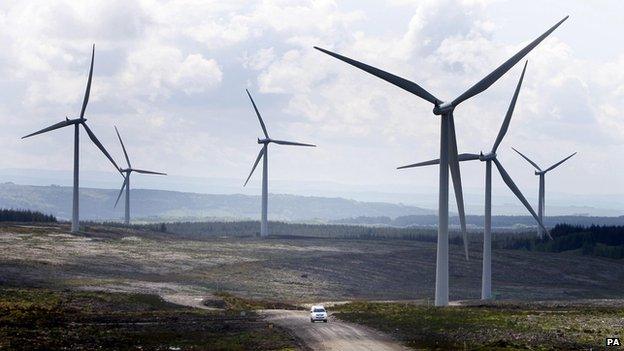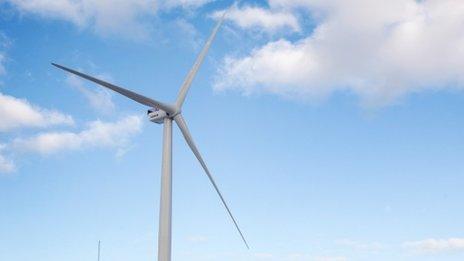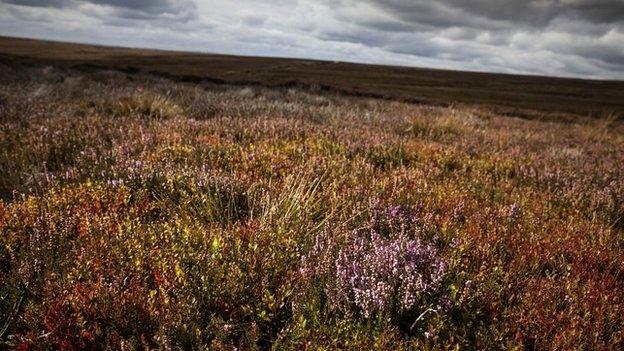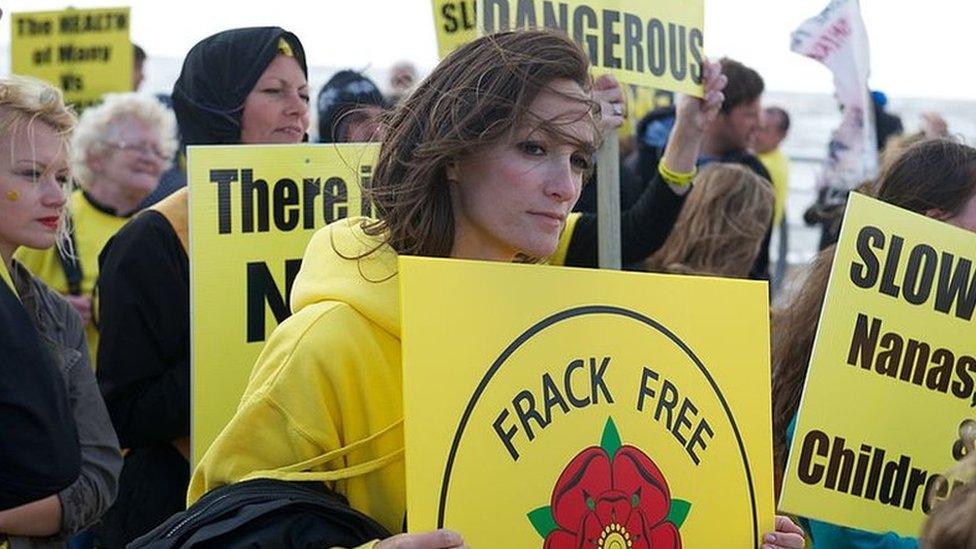Planning for wind farms must be "urgently addressed" say MSPs
- Published

Whitelee wind farm just outside Glasgow is the largest in the UK
A lack of clarity in planning for wind farms and onshore gas development must be "urgently addressed", MSPs have said.
The energy committee raised concerns over "buffer zones" between wind farms and local communities.
MSPs said further guidance was needed if Scotland was to meet its renewable energy targets.
The Scottish government said there was a duty to balance development with community and environmental needs.
The Economy, Energy and Tourism Committee, external is one of four Scottish Parliament committees examining the Scottish government's Third National Planning Framework, external.
The framework and the Scottish Planning Policy (SPP) on important land use refer to the Core Areas of Wild Land Map, external produced by Scottish Natural Heritage.
In its report. the committee said consultations on how the map was to be used should have been completed before MSPs began scrutiny.
MSPs said the timing of the consultations "has hindered our ability to scrutinise" the balance between economic development and protecting wild land.
MSPs also said planning documents needed to show "much greater clarity" on the buffer zones that must be in place between inshore wind farms and onshore oil and gas facilities, and local communities.
Committee convener Conservative MSP Murdo Fraser, said: "The committee was disappointed not to be able to fully scrutinise the key policies that will underpin our planning system, particularly controversial issues such as the future siting of onshore wind farms and unconventional onshore oil and gas extraction.
"Scotland deserves a transparent and consistent policy that provides clarity for planners, developers and communities."
He added: "The lack of clarity on how the Core Areas Wild Land Map is to be used, together with ambiguity on the separation distance between communities and wind farms, is causing uncertainty in the renewable energy industry and in communities where wind farms could be located.
"If Scotland is to stay on track to meet its challenging renewable energy targets then this must be urgently addressed."

The proposed extraction of shale oil and gas around the UK has proved controversial
The Scottish government has proposed increasing the separation distance between wind farms and local communities from 2km to 2.5km.
The committee asked "whether the separation distance is to be applied as a fixed boundary or whether flexibility can be applied by local planning authorities depending on the scale, size and number of wind turbines, the impact on topography and the levels of community support".
MSPs welcomed plans to establish similar buffer zones for onshore oil and gas extraction sites, along with a commitment from ministers "to consider whether the application processes for unconventional gas extraction and the use of hydraulic fracturing fully involve the communities where the extraction could take place".
Hydraulic fracturing, or fracking, is a technique for recovering gas and oil from shale rock. It involves pumping a mixture of water, sand and chemicals into a well, under high pressure, to fracture the rock.
A Scottish government spokesman said: "The Scottish government welcomes the positive approach taken by the four committees considering the Proposed National Planning Framework 3 and the Scottish Planning Policy.
"We agree that NPF3 has a key role to play in bringing together Scottish government policies to provide a clear, long-term spatial plan for growth. These connections are already strong - a wide range of policies have informed the proposed NPF3."
The spokesman added: "The planning process has a key role to play in ensuring all types of development are balanced with the needs of communities and quality of the environment.
"We are taking an evidence-based approach to our policy on unconventional gas and wind energy development, and will make our intentions clear in the finalised SPP."
The proposed National Planning Framework is also the subject of inquiries by the Local Government and Regeneration Committee, external, the Rural Affairs, Climate Change and Environment Committee, external and the Infrastructure and Capital Investment Committee, external.
- Published27 February 2014

- Published13 March 2014

